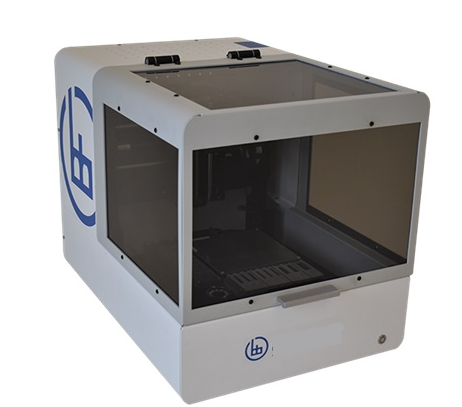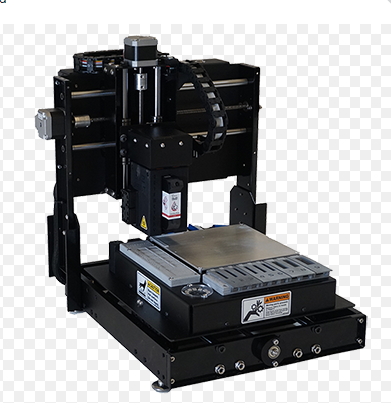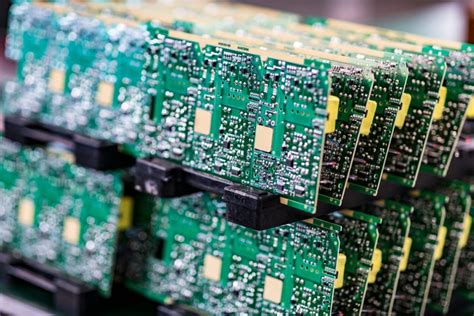Sv2 multilayer desktop pcb printer
Advantages Of Using The SV2 Multilayer Desktop PCB Printer
The SV2 Multilayer Desktop PCB Printer represents a significant advancement in the field of printed circuit board (PCB) manufacturing, offering numerous advantages that cater to both professional engineers and hobbyists alike.
One of the primary benefits of the SV2 is its ability to produce multilayer PCBs with remarkable precision and efficiency.
This capability is particularly valuable in the development of complex electronic devices, where multiple layers are often required to accommodate intricate circuitry and components. By enabling the creation of multilayer boards, the SV2 allows for more compact and sophisticated designs, which can lead to enhanced performance and functionality in the final product.
In addition to its multilayer capabilities, the SV2 stands out for its desktop form factor, which brings the power of PCB manufacturing directly to the user’s workspace.
This accessibility is a game-changer for small businesses, startups, and individual developers who may not have the resources to invest in large-scale manufacturing equipment. The compact size of the SV2 does not compromise its performance; instead, it offers a convenient and cost-effective solution for rapid prototyping and small-batch production. This immediacy in the design-to-production process can significantly shorten development cycles, allowing for quicker iterations and faster time-to-market for new products.
Moreover, the SV2 Multilayer Desktop PCB Printer is designed with user-friendliness in mind.
Its intuitive software interface simplifies the design and printing process, making it accessible even to those with limited experience in PCB manufacturing. The software includes features such as automated layer alignment and error checking, which help to minimize the risk of mistakes and ensure high-quality results. This ease of use is complemented by the printer’s robust construction and reliable performance, which together provide a seamless and hassle-free user experience.
Another notable advantage of the SV2 is its ability to reduce production costs.
Traditional PCB manufacturing methods often involve outsourcing to specialized facilities, which can be expensive and time-consuming. By bringing the manufacturing process in-house, the SV2 eliminates the need for third-party services, thereby reducing costs associated with shipping, handling, and labor. Additionally, the printer’s efficient use of materials helps to minimize waste, further contributing to cost savings. These financial benefits make the SV2 an attractive option for organizations looking to optimize their production budgets without compromising on quality.
Environmental considerations also play a role in the appeal of the SV2 Multilayer Desktop PCB Printer.
The printer’s design incorporates eco-friendly practices, such as the use of non-toxic inks and recyclable materials. This focus on sustainability aligns with the growing demand for environmentally responsible manufacturing solutions. By choosing the SV2, users can contribute to reducing the environmental impact of their production processes, which is increasingly important in today’s eco-conscious market.
Furthermore, the SV2’s versatility extends beyond its primary function of PCB printing.
It can also be used for other applications, such as creating custom enclosures and components, which adds to its value as a multifunctional tool. This adaptability makes the SV2 a versatile addition to any engineering or development lab, capable of supporting a wide range of projects and applications.
In conclusion, the SV2 Multilayer Desktop PCB Printer offers a host of advantages that make it a valuable asset for anyone involved in electronic design and manufacturing. Its ability to produce high-quality multilayer PCBs, combined with its user-friendly interface, cost-effectiveness, and environmental benefits, positions it as a leading solution in the market. By leveraging the capabilities of the SV2, users can achieve greater efficiency, innovation, and sustainability in their production processes.

Step-By-Step Guide To Setting Up Your SV2 Multilayer Desktop PCB Printer
Setting up your SV2 Multilayer Desktop PCB Printer is a meticulous process that requires attention to detail and a methodical approach. To ensure a seamless setup, it is essential to follow each step carefully, starting with the unboxing of the printer. Begin by placing the printer on a stable, flat surface in a well-ventilated area. This will provide a solid foundation and prevent any potential disruptions during the printing process. Next, carefully remove all packaging materials, including protective films and tapes, to avoid any interference with the printer’s components.
Once the printer is unboxed, the next step involves connecting the power supply.
Locate the power adapter and plug it into the designated port on the printer. Ensure that the power cord is securely connected to an electrical outlet. After establishing a stable power connection, turn on the printer by pressing the power button. The printer will undergo an initial boot-up sequence, during which it is crucial to avoid any interruptions.
Following the power setup, it is time to install the necessary software and drivers.
Insert the provided installation CD into your computer or download the latest software version from the manufacturer’s website. Follow the on-screen instructions to complete the installation process. This software is essential for controlling the printer and managing print jobs. Once the installation is complete, restart your computer to ensure that all changes take effect.
With the software installed, the next step is to connect the printer to your computer.
Use the provided USB cable to establish a connection between the printer and your computer. Ensure that the cable is securely plugged into both devices. Upon successful connection, your computer should recognize the printer and prompt you to complete the setup process. Follow the on-screen instructions to finalize the connection.
After establishing a connection, it is important to calibrate the printer to ensure accurate and precise printing.
Open the printer software on your computer and navigate to the calibration settings. Follow the instructions provided by the software to complete the calibration process. This step is crucial for achieving optimal print quality and avoiding any potential errors during the printing process.
Once the printer is calibrated, it is time to load the printing materials.
Open the printer’s material compartment and insert the appropriate materials, such as copper-clad boards and conductive ink cartridges. Ensure that the materials are properly aligned and securely in place. Close the compartment and verify that the printer recognizes the loaded materials.
With the materials loaded, you are now ready to start printing.
Open the printer software and select the desired print job. Adjust the print settings according to your requirements, such as layer thickness and print speed. Once you have configured the settings, initiate the print job and monitor the progress through the software interface. It is important to periodically check the printer during the printing process to ensure that everything is functioning smoothly.
In conclusion, setting up your SV2 Multilayer Desktop PCB Printer involves a series of detailed steps, from unboxing and connecting the power supply to installing software, calibrating the printer, and loading printing materials. By following these steps meticulously, you can ensure a successful setup and achieve high-quality prints. Remember to consult the user manual and manufacturer’s guidelines for any specific instructions or troubleshooting tips.

Comparing The SV2 Multilayer Desktop PCB Printer To Traditional PCB Manufacturing Methods
The SV2 Multilayer Desktop PCB Printer represents a significant advancement in the field of printed circuit board (PCB) manufacturing, offering a modern alternative to traditional methods. Traditional PCB manufacturing typically involves a series of complex and time-consuming steps, including designing the circuit, creating a photomask, etching the copper-clad board, and finally, drilling and plating through-holes. This process, while effective, often requires specialized equipment, skilled labor, and substantial lead times, making it less accessible for small-scale or rapid prototyping needs.
In contrast, the SV2 Multilayer Desktop PCB Printer streamlines the entire process by integrating multiple functions into a single, compact device. This printer utilizes advanced additive manufacturing techniques to deposit conductive and insulating materials layer by layer, directly onto a substrate. As a result, it can produce multilayer PCBs with high precision and minimal manual intervention. This capability is particularly advantageous for engineers and designers who need to quickly iterate on their designs without the delays associated with traditional manufacturing.
One of the most notable benefits of the SV2 printer is its ability to significantly reduce production time.
Traditional PCB manufacturing can take several days or even weeks, depending on the complexity of the design and the workload of the manufacturing facility. In contrast, the SV2 can produce a fully functional PCB in a matter of hours. This rapid turnaround is invaluable for prototyping and small-batch production, where time-to-market is a critical factor.
Moreover, the SV2 printer offers a high degree of flexibility in terms of design modifications.
In traditional manufacturing, any changes to the PCB design typically require creating new photomasks and reconfiguring the production setup, which can be both time-consuming and costly. With the SV2, design changes can be implemented quickly and easily by simply updating the digital design file. This flexibility allows for more iterative testing and refinement, leading to better final products.
Another significant advantage of the SV2 printer is its cost-effectiveness for low-volume production.
Traditional PCB manufacturing is often cost-prohibitive for small quantities due to the setup costs and minimum order requirements imposed by many manufacturers. The SV2 eliminates these barriers by allowing users to produce exactly the number of PCBs they need, without incurring additional setup costs. This makes it an ideal solution for startups, research and development teams, and educational institutions.
Furthermore, the SV2 printer contributes to sustainability in PCB manufacturing.
Traditional methods generate a considerable amount of waste, including excess copper, chemicals used in the etching process, and discarded photomasks. The additive manufacturing approach of the SV2 minimizes waste by using only the necessary amount of materials and eliminating the need for hazardous chemicals. This not only reduces environmental impact but also aligns with growing industry trends towards more sustainable manufacturing practices.
In conclusion, the SV2 Multilayer Desktop PCB Printer offers a compelling alternative to traditional PCB manufacturing methods. Its ability to reduce production time, enhance design flexibility, lower costs for low-volume production, and promote sustainability makes it a valuable tool for a wide range of applications. As technology continues to advance, it is likely that such innovative solutions will play an increasingly important role in the future of PCB manufacturing, providing new opportunities for efficiency and creativity in electronic design.

Troubleshooting Common Issues With The SV2 Multilayer Desktop PCB Printer
The SV2 Multilayer Desktop PCB Printer is a sophisticated piece of technology designed to streamline the process of creating printed circuit boards (PCBs). However, like any advanced machinery, it is not immune to occasional issues that can disrupt its operation. Understanding how to troubleshoot common problems can significantly enhance the efficiency and longevity of the printer.
One frequent issue users encounter is misalignment of the printed layers.
This problem often stems from improper calibration of the printer. To address this, it is essential to ensure that the printer is placed on a stable, level surface. Additionally, recalibrating the printer according to the manufacturer’s guidelines can help rectify alignment issues. If the problem persists, checking for any mechanical obstructions or wear in the printer’s moving parts may be necessary.
Another common problem is incomplete or uneven printing, which can be attributed to clogged nozzles or insufficient ink supply.
Regular maintenance, including cleaning the nozzles and ensuring that the ink cartridges are adequately filled, can prevent this issue. If the nozzles are clogged, using the printer’s built-in cleaning function or manually cleaning them with a suitable solvent can restore proper ink flow. Moreover, verifying that the ink cartridges are correctly installed and compatible with the printer model is crucial.
Connectivity issues can also pose significant challenges, particularly when the printer fails to communicate with the computer or network.
Ensuring that all cables are securely connected and that the printer’s firmware is up to date can resolve many connectivity problems. Additionally, checking the network settings and ensuring that the printer and computer are on the same network can facilitate smoother communication. If wireless connectivity is being used, ensuring a strong and stable Wi-Fi signal is imperative.
Print quality can sometimes be compromised by environmental factors such as temperature and humidity.
The SV2 Multilayer Desktop PCB Printer operates optimally within specific environmental conditions. Maintaining a controlled environment, free from excessive dust and moisture, can enhance print quality. If print quality issues persist, inspecting the printer’s internal components for dust accumulation and cleaning them as necessary can be beneficial.
Software-related issues can also affect the printer’s performance.
Ensuring that the latest software updates and drivers are installed can mitigate many software-related problems. If the printer’s software crashes or behaves unpredictably, reinstalling the software or performing a factory reset can often resolve these issues. Additionally, consulting the user manual or the manufacturer’s support resources can provide valuable insights into resolving software-related problems.
Power supply issues can disrupt the printer’s operation, leading to unexpected shutdowns or failure to power on.
Verifying that the power cable is securely connected and that the power outlet is functioning correctly is a fundamental troubleshooting step. If the printer continues to experience power issues, inspecting the power supply unit for any signs of damage or wear may be necessary. In some cases, replacing the power supply unit may be required to restore normal operation.
In conclusion, while the SV2 Multilayer Desktop PCB Printer is a highly capable device, it is not without its potential issues. By understanding and addressing common problems such as misalignment, incomplete printing, connectivity issues, environmental factors, software glitches, and power supply concerns, users can ensure that their printer operates smoothly and efficiently. Regular maintenance and adherence to the manufacturer’s guidelines are key to preventing and resolving these issues, thereby maximizing the printer’s performance and lifespan.





